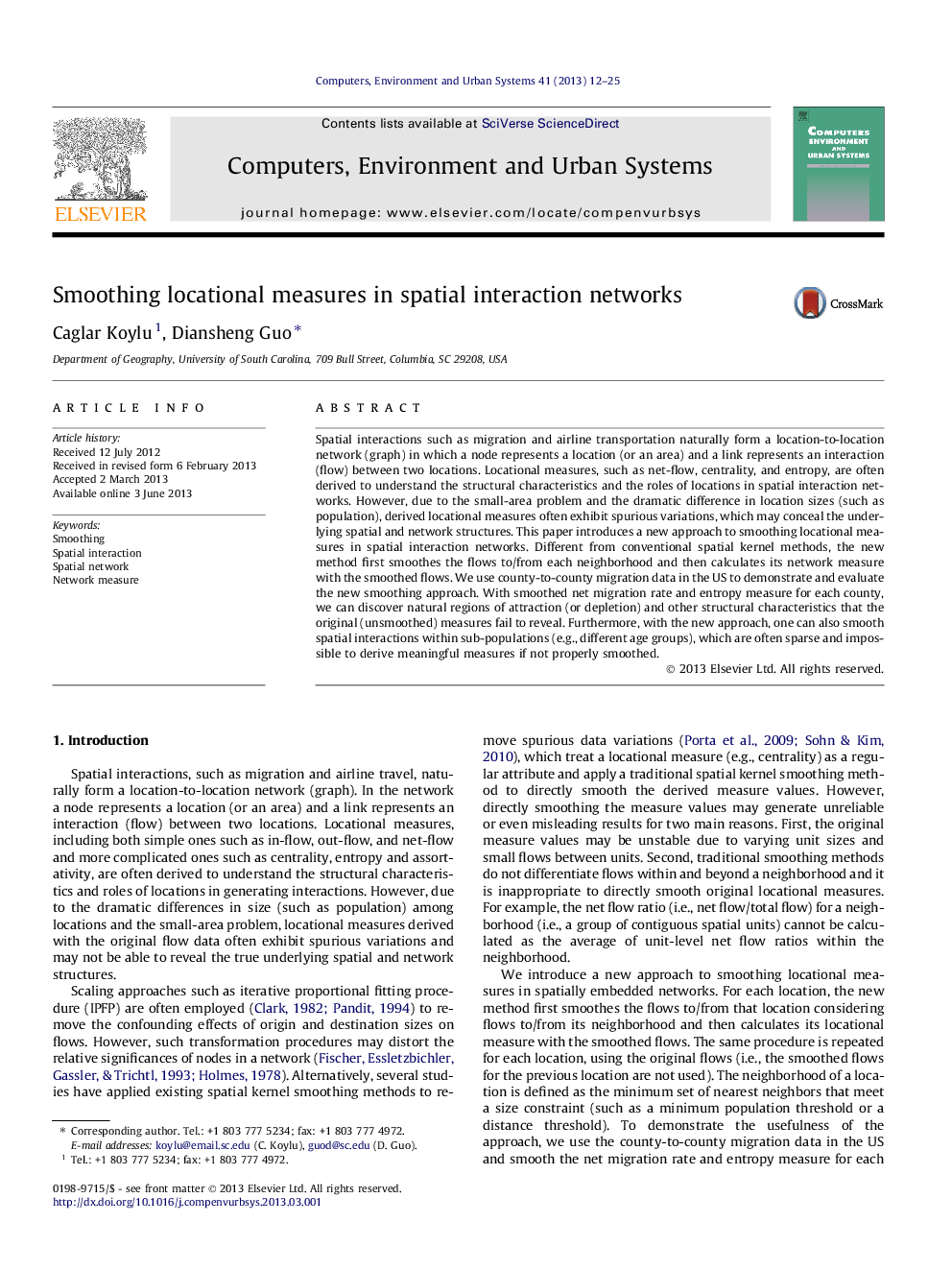| Article ID | Journal | Published Year | Pages | File Type |
|---|---|---|---|---|
| 6921997 | Computers, Environment and Urban Systems | 2013 | 14 Pages |
Abstract
Spatial interactions such as migration and airline transportation naturally form a location-to-location network (graph) in which a node represents a location (or an area) and a link represents an interaction (flow) between two locations. Locational measures, such as net-flow, centrality, and entropy, are often derived to understand the structural characteristics and the roles of locations in spatial interaction networks. However, due to the small-area problem and the dramatic difference in location sizes (such as population), derived locational measures often exhibit spurious variations, which may conceal the underlying spatial and network structures. This paper introduces a new approach to smoothing locational measures in spatial interaction networks. Different from conventional spatial kernel methods, the new method first smoothes the flows to/from each neighborhood and then calculates its network measure with the smoothed flows. We use county-to-county migration data in the US to demonstrate and evaluate the new smoothing approach. With smoothed net migration rate and entropy measure for each county, we can discover natural regions of attraction (or depletion) and other structural characteristics that the original (unsmoothed) measures fail to reveal. Furthermore, with the new approach, one can also smooth spatial interactions within sub-populations (e.g., different age groups), which are often sparse and impossible to derive meaningful measures if not properly smoothed.
Related Topics
Physical Sciences and Engineering
Computer Science
Computer Science Applications
Authors
Caglar Koylu, Diansheng Guo,
